Invisalign – Dallas, TX
Beautifully Straighten Teeth
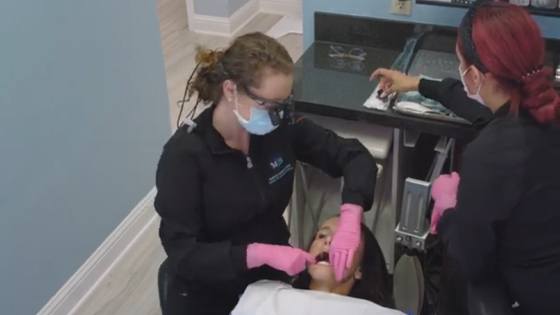
If you regularly avoid showing off your smile because of noticeable gaps or misaligned teeth, it’s time to make a change. DFW-area patients who visit Dr. Mariya Barnett won’t have to worry about wearing clunky metal braces. The Invisalign treatment is a seamless and easy way to beautifully straighten teeth while maintaining a healthy sense of self-confidence. If you’re in White Rock Lake, TX or another nearby area, contact us today to schedule your first appointment! Our team looks forward to meeting you.
How Invisalign Works
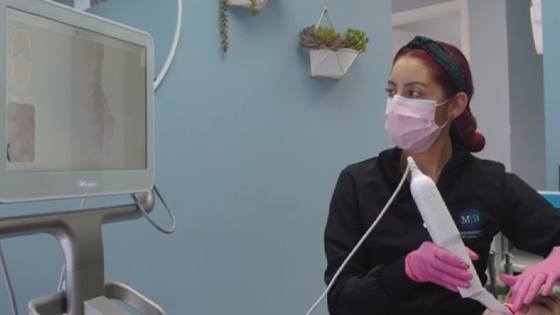
It’s simple – patients wear a series of clear plastic aligners customized just for their smiles. Each aligner represents a different stage of your teeth as they’re gradually shifted towards a more optimal position. Each tray is worn for about two weeks before switching to the next set.
Invisalign aligners should be worn at all times, except when eating, brushing, and flossing. Their removable nature makes it easy to still enjoy all your favorite foods and keep your smile clean without any trouble. Better yet, there’s no uncomfortable tightening to worry about – only brief, simple progress appointments with us every six weeks on average.
Am I a Good Candidate for Invisalign?
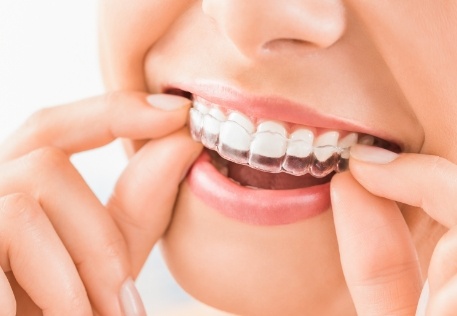
If you’re looking to straighten teeth in Dallas, Invisalign might be just the treatment you need. It can correct a variety of smile issues, such as:
Crowded Teeth
If your teeth are too close together, they can be difficult to properly brush and floss. This increases your risk for developing cavities and gum disease. Invisalign can line your teeth up for more efficient cleaning.
Spaces Between Teeth
A gapped smile is much worse than just being considered unattractive. Bits of particles can get trapped in these spaces and promote bacterial growth, which causes bad breath among other oral health problems. Invisalign in Dallas can more evenly space out your pearly whites.
Bite Alignment
If you have an overbite, underbite, or crossbite, it can cause you to grind your teeth and clench your jaw, leading to sped-up wear and tear of the tooth enamel. Invisalign can correct these bite problems.
Benefits of Invisalign

Invisalign offers a whole world of benefits when compared to traditional braces, including:
Cosmetic Superiority
With Invisalign, you can receive orthodontic treatment without anyone even having to know!
Safety and Comfort
The metal brackets and wires of braces can damage your tongue, gums, and lips. Invisalign’s smooth plastic trays are designed to avoid soft tissue irritation.
Speed
While patients typically spend 24 to 36 months wearing traditional braces, Invisalign treatment can often be completed in as little as 12 months.
Daily Maintenance
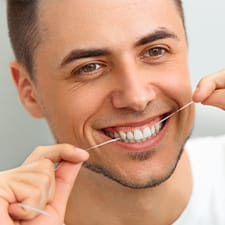
The subtlety of your aligners depends on your keeping them clean. If you don’t brush your teeth between eating and placing your aligners back in, bits of food can get stuck in your aligners, causing not only stains, but infections as well. To prevent this, you’ll have to clean your aligners regularly.
It’s a good idea to rinse your aligners every time you remove them. Make sure to use only lukewarm water and not hot water, as that could change the shape of the plastic. At least once a day, brush your aligners gently with a soft-bristled toothbrush. Just be sure to not use toothpaste, as that could actually be abrasive.
Understanding the Cost of Invisalign
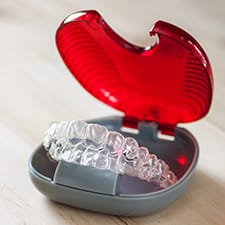
Invisalign in Dallas is a great alternative for metal braces, which is why it’s an incredibly popular treatment option among both teens and adults. However, many patients wonder whether it’s worth the cost. Below, we’ve broken down a few different factors that will help you better understand how much your treatment will be.
Every Treatment is Different

Since no two smiles are the same, it makes sense that Invisalign treatment wouldn’t have a set, default price. Some patients may only need to wear 12 sets of trays to straighten their teeth, while others may need to wear 28 to address bite problems and more severe orthodontic issues.
During your initial consultation, Dr. Barnett will take X-rays of your smile and examine the alignment of your bite and teeth. Based on our team’s findings, we’ll outline a customized treatment plan, including details like how many aligners you’ll need and how long your treatment will take. With this information, we’ll be able to provide you with a breakdown of the cost so you know exactly what to expect financially.
Save Money By Avoiding Future Oral Problems
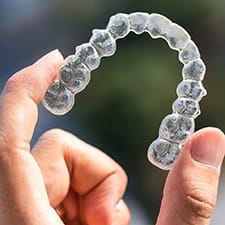
Even though Invisalign may cost you up-front, it can help save you money down the road. With straightened teeth in Dallas, it’ll be easier to effectively brush and floss, helping you avoid plaque and tartar buildup that can put you at a higher risk of developing cavities and gum disease. Additionally, bite problems can also increase your risk of grinding your teeth or developing TMJ dysfunction, which could impact your day-to-day life and cause a variety of uncomfortable symptoms.
Does Dental Insurance Cover Invisalign?

Not every dental insurance plan covers Invisalign treatment, but some may pay for a portion of your orthodontic aligners. The best way to find out whether your plan does is to contact them directly. If you have any questions or need help getting ahold of your insurance provider, our team is more than happy to assist!
Other Options to Make Invisalign Treatment Affordable

In addition to dental insurance, you may also benefit from our in-house membership plan, which provides patients with $500 off Invisalign treatment. Or, we also offer additional financing through CareCredit and LendingClub. Both of these trusted, third-party financers provide flexible monthly payment plans that can fit nearly any budget, so you don’t have to break the bank to get the orthodontic treatment you need.
Invisalign FAQs
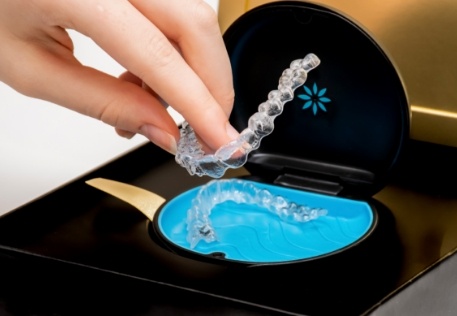
Before you begin your Invisalign treatment, you need to fully understand the process and what to expect from it. The more you know, the easier it is to make good decisions about your oral health. Dr. Barnett has answered some common Invisalign FAQs in Dallas, which are listed below. Take the time to get more familiar with the concept of clear aligners, and be sure to think of any questions of your own that you’ll want to bring up during your consultation!
Can Teens and Children Benefit from Invisalign?
Invisalign was originally developed as an orthodontic alternative for adults that didn’t want to wear braces. That said, teens can often benefit as well. In fact, the aligners used during the treatment can be designed to accommodate still-growing teeth, and they can be outfitted with tools to encourage your teen to adhere to the treatment.
Typically, Invisalign isn’t recommended for younger children since their mouths are still developing. They’re also more likely to remove their aligners unnecessarily, or they might lose them altogether. We’ll need to consider each patient’s situation very carefully before we can offer Invisalign as a solution.
Are There Any Diet Restrictions at All?
Unlike braces that are fixed in place in your mouth, Invisalign is removable and can simply be taken out of your mouth during meals. In other words, the treatment won’t affect your diet at all; you can still enjoy all the foods you love. You may want to stick to things that are easy to chew while adjusting to a new set of aligners (since your mouth is likely to be a little uncomfortable), but this period doesn’t usually last too long.
Don’t forget to brush before putting your aligners back in. Otherwise, you might trap bits of food and bacteria against your teeth.
What Should I Do If My Aligner Breaks?
Unfortunately, there is a chance of your Invisalign aligners being damaged. If there’s only a small crack, you should still be able to wear the aligner until it’s time to move on to the next one. However, if it’s split or broken to the point of losing its form, you need to stop wearing it. Regardless of the extent of the damage, you should call us right away to discuss your options. We might recommend replacing the aligner altogether, but in some situations we might be able to repair it; depending on how your treatment is progressing, we may also suggest going back to a previous aligner or moving on to the next one.
Can I Get Invisalign Even If I’ve Already Had Braces?
Sometimes the teeth shift back to a previous position years after an orthodontic treatment. If that happens, you may be able to use Invisalign to reverse the damage. And in other cases, you may even be able to switch to clear aligners even when you’re already wearing braces! No matter what your situation is, you can count on Dr. Barnett to help you determine whether or not Invisalign is right for you.
